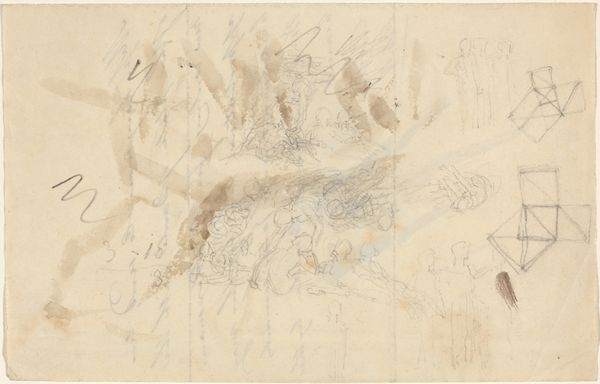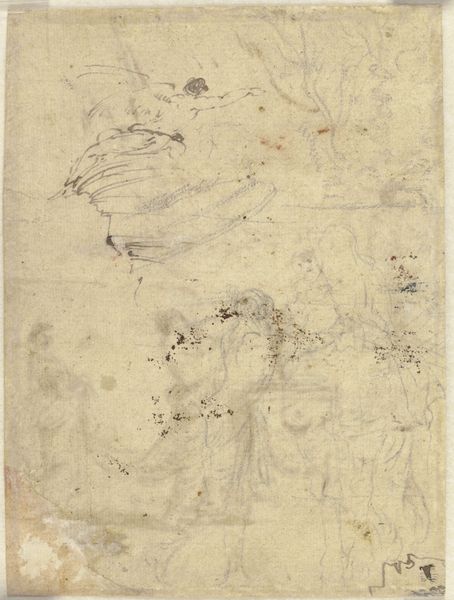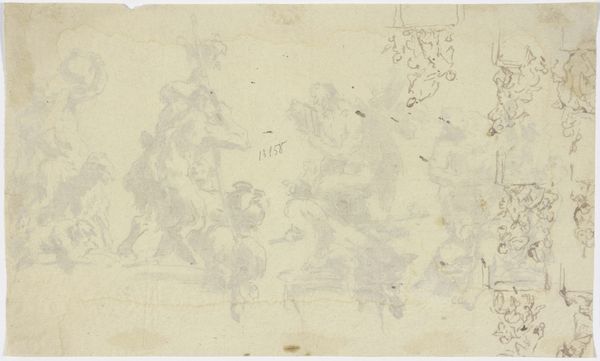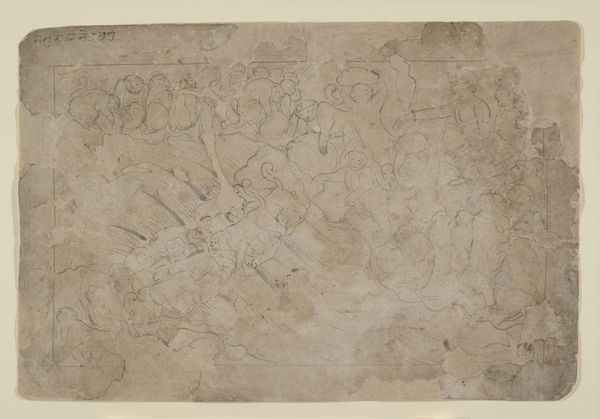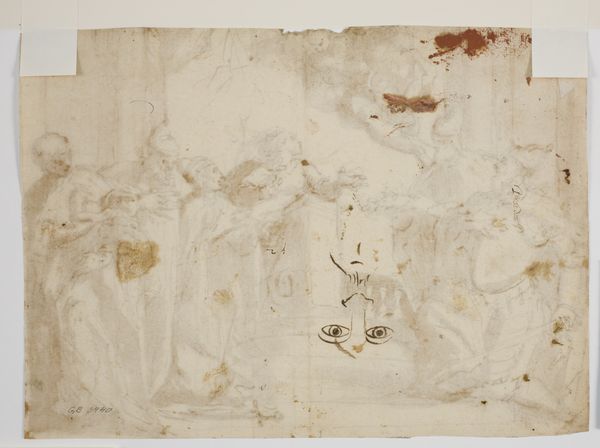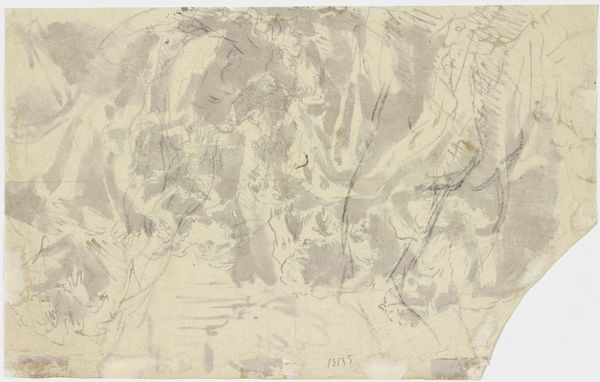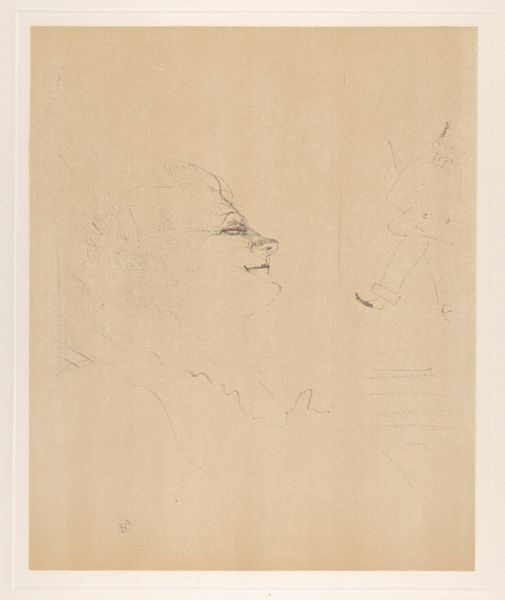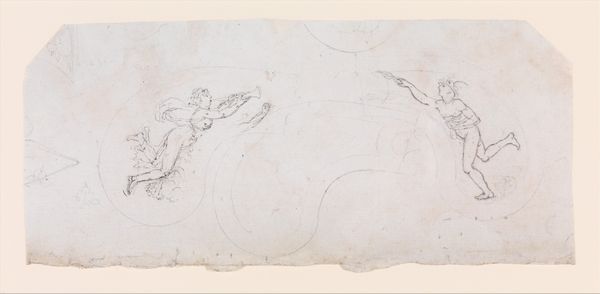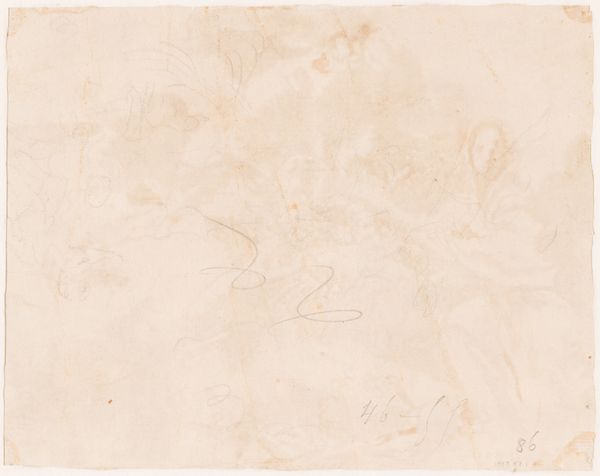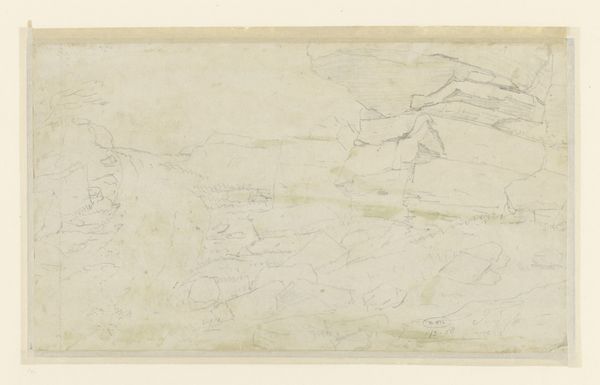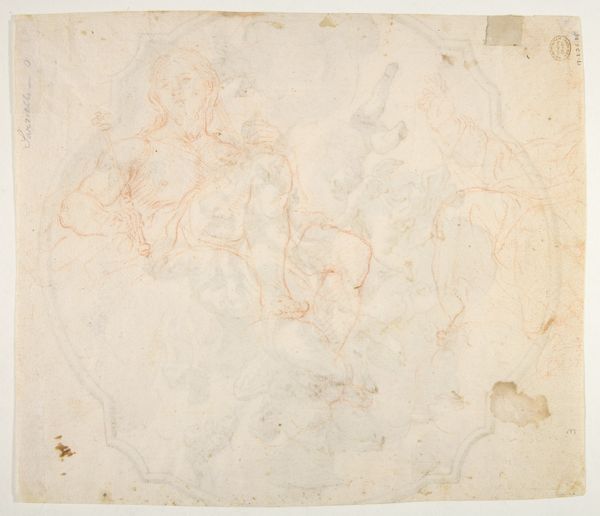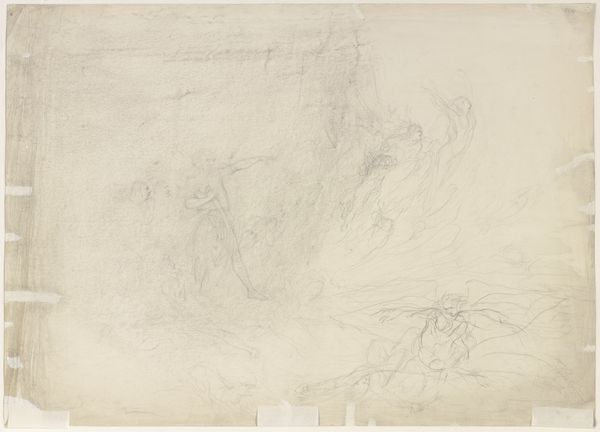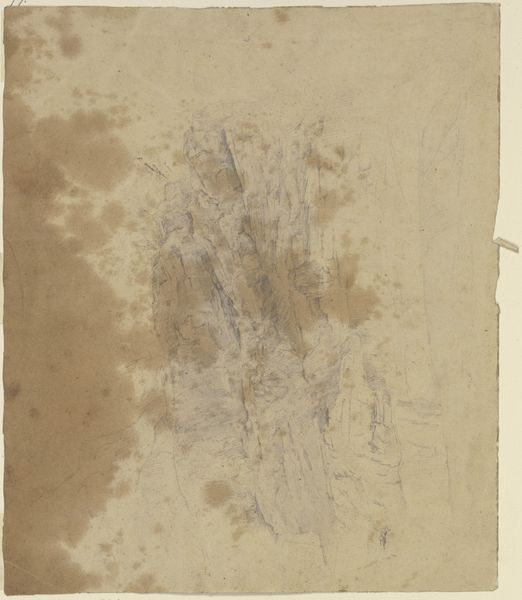
Apotheosis of a saint. Alternative study for the same saint as recto 1675 - 1741
0:00
0:00
drawing, charcoal
#
drawing
#
baroque
#
charcoal drawing
#
figuration
#
charcoal
Dimensions: 247 mm (height) x 298 mm (width) (bladmaal)
Editor: Here we have a charcoal drawing titled "Apotheosis of a Saint. Alternative study for the same saint as recto", made sometime between 1675 and 1741 by Giovanni Antonio Pellegrini. The image appears faded and fragmentary, almost like a forgotten dream. It gives off a celestial, yet ghostly, atmosphere. What do you see in this piece? Curator: It strikes me as a glimpse into the artist's creative process, a fleeting idea captured in charcoal. It's like eavesdropping on Pellegrini's imagination as he grapples with how to depict a saint ascending to heaven, right? These Baroque artists were always so keen on drama. Look how he suggests the upward movement with these swirling lines – hinting at figures and clouds without fully defining them. What a flurry of lines. It's as if he's channeling the energy of divine inspiration directly onto the paper. Does the immediacy of charcoal surprise you? Editor: It really does. The texture is what fascinates me. Did many artists use charcoal in this manner during the Baroque era? Curator: Charcoal was often used for preparatory sketches, especially studies of figures and compositions. So, he wasn't planning on display: the relative convenience allowed them to quickly work out ideas before committing to more time-consuming techniques. This wasn't necessarily meant for public display, this kind of sketch offered room for personal and experimental thinking. Look at it, what an adventure, eh? Editor: I see that now. The ephemeral quality of the charcoal suits the ethereal subject matter. It's a nice contrast. I almost feel like I'm intruding on a private moment. Curator: Precisely! Art is about building intimacy and trust: Pellegrini allows us into this fascinating and raw moment of creativity. Something we have, surprisingly, achieved together. Editor: Agreed, thank you. It's certainly a novel view on Baroque art.
Comments
No comments
Be the first to comment and join the conversation on the ultimate creative platform.
